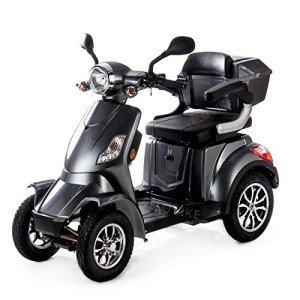A Reference To Buying A Mobility Scooter From Start To Finish
Buying a Mobility Scooter: A Comprehensive Guide
Mobility scooters have become increasingly popular as a means of transport for people who may have problem strolling due to age, disability, or other health conditions. These mobility devices are created to provide independence and ease of travel, whether for outside experiences or indoor navigation. Nevertheless, with a range of options readily available, picking the best mobility scooter can be frustrating. This short article aims to use an informative guide on buying a mobility scooter, in addition to FAQs to help in the decision-making procedure.
Understanding Mobility Scooters
Mobility scooters are electric-powered vehicles that are designed to assist people with mobility difficulties. They vary in style, size, and functionality to cater to various requirements. Normally, mobility scooters feature 3 or 4 wheels, a seat for the user, handlebars for steering, and are developed to browse both indoor and outdoor areas.
Kinds Of Mobility Scooters
There are generally 3 types of mobility scooters, each dealing with particular needs:
Portable/Travel Scooters:
- Lightweight and foldable for simple transport.
- Best for brief ranges and travel.
- Minimal weight capacity and variety.
Mid-sized Scooters:
- Offers a balance between portability and performance.
- Appropriate for daily outdoor use.
- Adequate weight capacity and range.
Durable Scooters:
- Designed for rougher terrains and heavier people.
- Typically have greater weight capacities and longer battery life.
- Functions larger wheels and might include sophisticated suspension systems.
Type
Functions
Best For
Portable/Travel
Lightweight, collapsible
Brief ranges, travel
Mid-sized
Balance of mobility and efficiency
Daily outdoor use
Sturdy
Greater weight capability, rugged style
Rough surfaces, much heavier people
Secret Considerations When Buying a Mobility Scooter
When choosing a mobility scooter, several factors should be thought about to make sure the very best fit for private requirements. Below is a list of crucial considerations:
Weight Capacity:
- Ensure the scooter can support the user's weight comfortably to prevent damage and make sure security.
Variety:
- Consider how far you will be taking a trip on a single charge. Battery range can vary from around 10 to over 35 miles.
Size:
- Assess the measurements to determine whether the scooter can fit through entrances and into cars.
Surface:
- Evaluate where the scooter will primarily be used (pavement, grass, rough terrain) and select a design developed for those conditions.
Storage Space:
- If the scooter requires to be stored in a small area, size may be an important aspect.
Functions and Accessories:
- Look for vital functions like adjustable seats, armrests, storage baskets, and lights.
Expense:
- Mobility scooters can vary anywhere from a couple of hundred to several thousand dollars. Assess your spending plan and consider financing options if required.
Where to Buy a Mobility Scooter
Mobility scooters can be bought from various sources, each offering various benefits. Below is a list of common acquiring choices:
Medical Supply Stores:
- These stores frequently offer professional suggestions and the chance to check out different models.
Online Retailers:
- Websites like Amazon and specialized medical devices sites offer a large range of alternatives, but buyers ought to ensure they have a return policy in case the product is not suitable.
Direct from Manufacturers:
- Buying straight allows clients to customize their scooters, although this may take extra time.
Used Equipment Stores:
- Purchasing a used scooter can save money, however it's important to completely inspect the scooter's condition and battery life.
FAQs About Buying a Mobility Scooter
Q: How do I understand which size scooter is right for me?
A: The best size depends on your physical measurements and where you prepare to utilize the scooter. Inspect the requirements versus your measurements and consider aspects like weight and convenience.
Q: Are mobility scooters covered by insurance coverage?
A: Coverage depends upon your insurance strategy. Medicare might cover scooters under specific medical conditions. It's advisable to talk to your provider ahead of time.
Q: How fast can a mobility scooter go?
A: Most mobility scooters have an optimal speed of around 4 to 8 miles per hour, depending upon the model and guidelines in your area.
Q: What maintenance is needed for mobility scooters?
A: Regular maintenance consists of checking tire pressure, keeping the battery charged, guaranteeing connections are tidy, and inspecting mechanical parts for wear and tear.
Q: Can I take my mobility scooter on public transport?
A: Many public transport systems accommodate mobility scooters, however you should examine the specific regulations of your local transit authority.
Buying a mobility scooter can significantly improve the lifestyle for individuals with mobility obstacles by supplying independence and ease of motion. By understanding powered mobility scooter offered and considering crucial elements such as weight capability, range, and desired usage, prospective buyers can make informed choices. With appropriate research study and consideration, one can find the perfect mobility scooter to best fit their requirements, allowing them to navigate the world around them with confidence.
